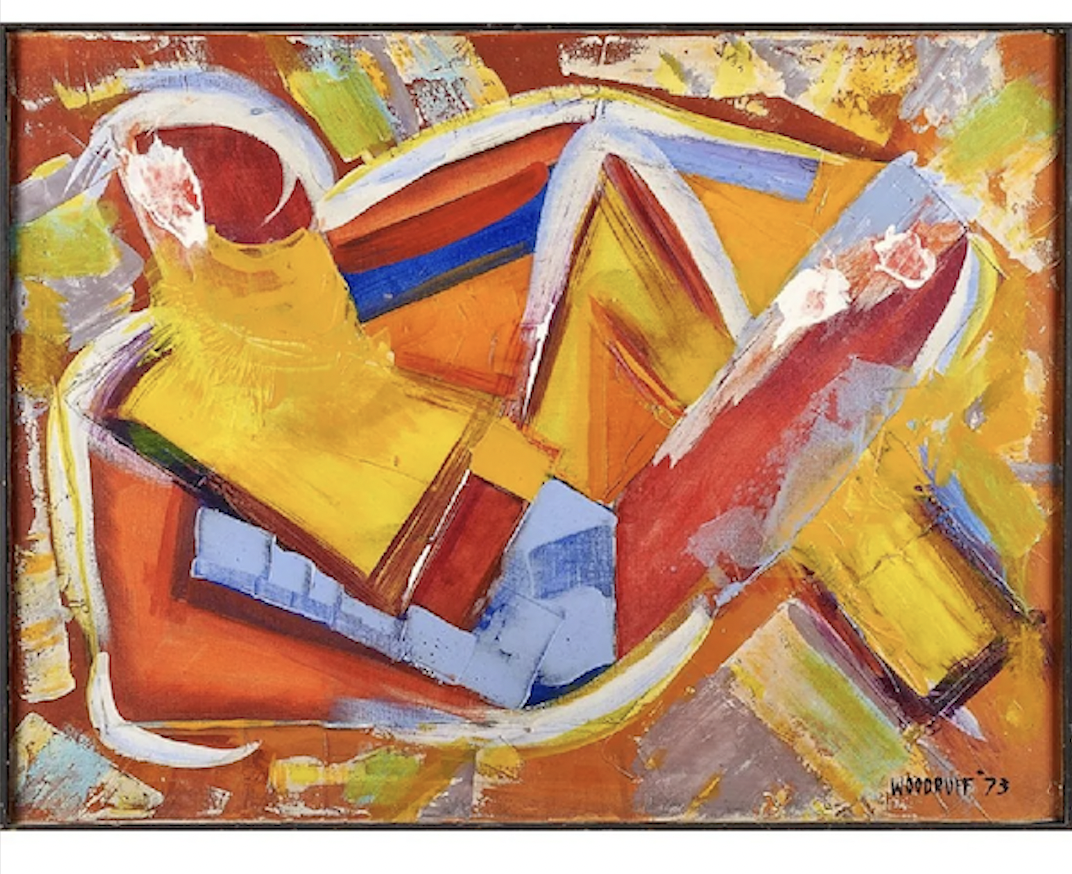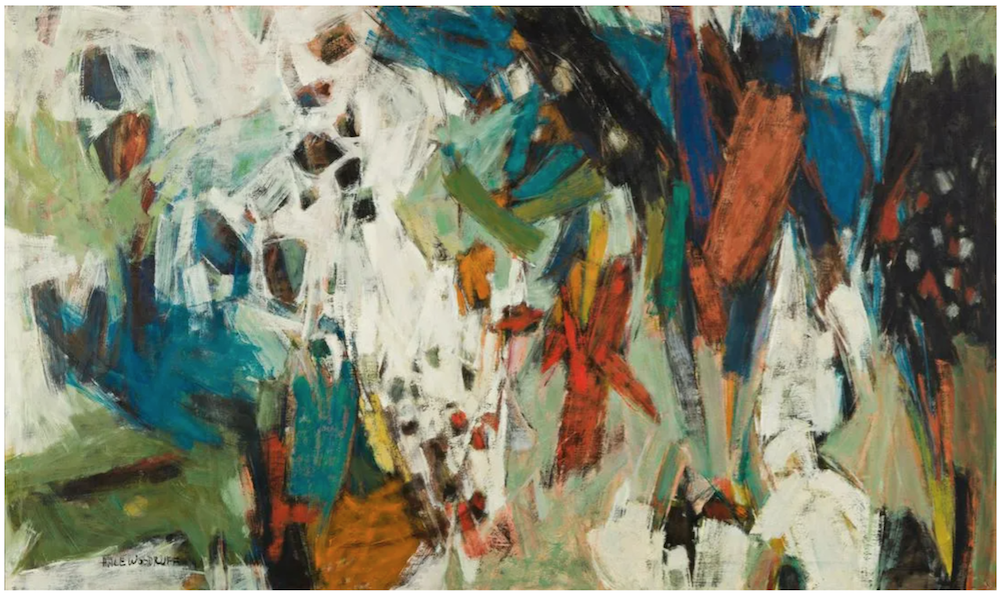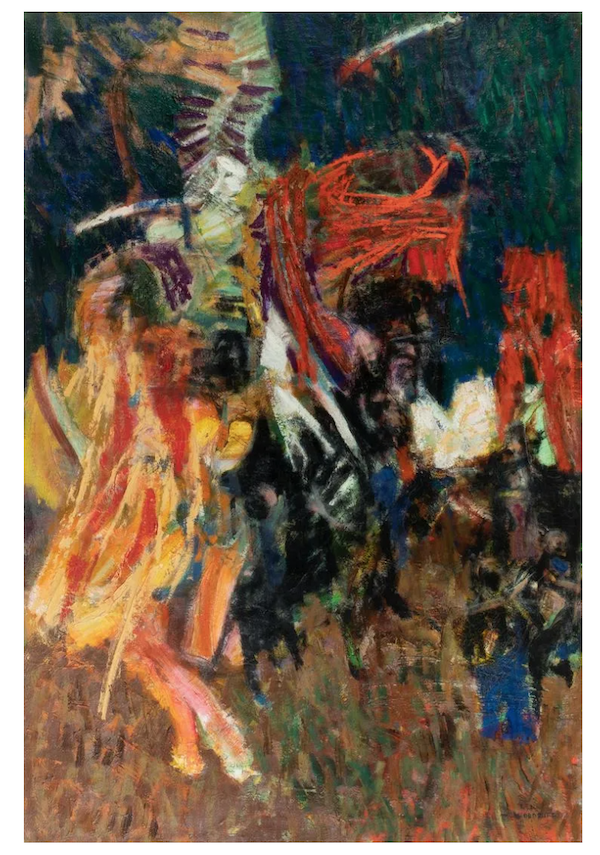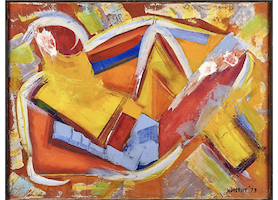
NEW YORK — Hale Aspacio Woodruff‘s (1900-1980) contributions to 20th-century American art could easily fill a book.
His Amistad murals of 1939-40 are believed to be the first artworks depicting the now-legendary 1839 uprising on the Spanish slave ship La Amistad. The works were commissioned to mark the 100th anniversary of the incident in which African men who were kidnapped and held on board to be sold as slaves killed their captors. After the ship ran aground in New York, the men were put on trial for piracy and murder as Spain sought their return as “salvage cargo.” Instead, the judge declared them free men able to return to West Africa.

Born in Cairo, Illinois, Woodruff grew up in Nashville, Tennessee, and over time would become one of the region’s leading Black artists. He created many socially conscious works showing what life was like in the 1930s and 1940s for people of color. He was a skilled draftsman as well as a painter and created many canvases, woodblock prints and murals that depicted the African American experience accurately and sensitively, but not in a sentimental manner.
Woodruff is regarded as one of the leading lights of the Harlem Renaissance, an intellectual and cultural revival of African American music, dance, art, fashion, literature, theater, politics and scholarship that flourished in New York City’s Harlem neighborhood in the decades between World War I and World War II.
He was also as an art professor. He taught at Atlanta University from 1931-1945, chairing its art department. While in Atlanta, he furthered the studies of young black people and helped launch many artists’ careers. Thanks in part to his efforts, the university became known as the Ecole des Beaux Arts of the deep South. He created the Atlanta University Art Annuals, which exposed students to African American art and gave them a venue in which to exhibit their own art.

From 1945 through 1968, Woodruff lived in New York City, where he painted and taught art at New York University. The 1950s were arguably his most successful years. In 1958, he created one of his most famous works, Card Players, which is now in the collection of the Metropolitan Museum of Art in New York City. Around the same time, he painted Carnival, which sold for $550,000 plus the buyer’s premium in October 2021 at Swann Auction Galleries. Measuring 40½ by 68 inches, this painting was exhibited in the third of his solo exhibitions at the Bertha Schaefer Gallery in the 1950s, which launched him as a major abstract artist in New York.
“Carnival is an excellent and important example of Hale Woodruff’s postwar abstraction, and his largest abstract canvas to come to auction,” according to Swann Auction Galleries’ catalog description. The painting demonstrates the artist’s progression in abstract art during the postwar era and is as exuberant as its title implies, with energetic brushwork and color.

Woodruff’s best abstracted artworks are bold and rippling with energy, with powerful areas of color, such as in a circa-1958 untitled oil on canvas that sold for $37,500 plus the buyer’s premium in September 2019 at Treadway. This work, in particular, shows how the artist began playing with his painting style during the 1950s. He increased the size of his brushstrokes to the point where they became big abstract lines and forms in themselves, nearly filling each canvas.
By the late 1950s, his style had become a bit more refined and was marked by irregular shapes and diagonal lines, as seen in a circa-1960 oil painting that earned $25,000 plus the buyer’s premium in March 2019 at Treadway.

In addition to art depicting the Black experience, he also created traditional and regionalist works reflecting scenes he found in sleepy Southern towns or along the shore such as Windblown Trees, which realized $22,500 plus the buyer’s premium in May 2022 at Hindman. Ever-evolving as an artist, this Woodruff work is representational instead of abstract.
Woodruff had a definite fondness for landscapes, but a striking 1973 abstracted acrylic painting of a reclining figure, Marisa In Vogue, speaks to his early Cubist influences. The signed painting brought $23,000 plus the buyer’s premium in November 2017 at Rago Arts and Auction Center.
Hale Woodruff paved the way for African American artists to be recognized first and foremost as talented individuals instead of codified by their heritage. His works continues to attract art collectors for their raw honesty, bright colors and their ability to tell a story.



